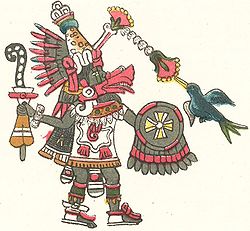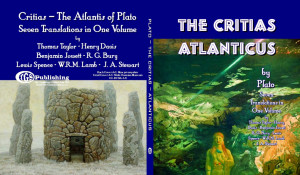Lewis Spence
Atlanticus
Atlanticus is the word used by Pedro Sarmiento de Gamboa to describe Atlantis. Thomas Taylor in his celebrated translation of Plato’s works has subtitled Critias as Atlanticus. In the 20th century The Critias Atlanticus was published, being a compilation(a) of seven translations of Plato’s Critias that includes the work of Thomas Taylor, Benjamin Jowett, Henry Davis, R. G. Bury, Lewis Spence, W.R.M. Lamb, John Alexander Stewart.
Shewan, Alexander (L)
Alexander Shewan (1851- 1941) had worked for the Indian Civil Service but was better known as an Homeric scholar.
James Bramwell noted[195.88] that Shewan accepted that the Atlantis story had been familiar to the Egyptians but that it had been embellished with details from Crete.
Leslie Shepard in his Introduction to a 1968 edition of Lewis Spence’s The Histoy of Atlantis notes that it used be fashionable to jeer at the existence of Atlantis but, as the Homeric scholar, Professor Alexander Shewan points out, “that can hardly continue, now that Mr. Lewis Spence has examined the evidence at length in The Problem of Atlantis, Atlantis in America, and The History of Atlantis.”
Quetzalcoatl
 Quetzalcoatl is a Mesoamerican deity, whose name in the local Nahuatl language means ‘feathered serpent’. To the Aztecs he was a creator god and also had a parallel in Mayan culture to whom he was known as Kukulcan or Gucumatz.
Quetzalcoatl is a Mesoamerican deity, whose name in the local Nahuatl language means ‘feathered serpent’. To the Aztecs he was a creator god and also had a parallel in Mayan culture to whom he was known as Kukulcan or Gucumatz.
For some centuries it has been generally thought that the Aztec Emperor Moctezuma II initially believed that Hernán Cortés’ arrival to be the anticipated return of their deity Quetzalcoatl. The veracity of this story has come under increased attack, exemplified by a paper from Jordan Baker(b).
It is a commonly held belief among Mormons that Quetzalcoatl was Jesus Christ!
More widespread and a little less contentious is the idea that St. Thomas the Apostle was Quetzalcoatl(e). “Within two decades of the Conquest, Quetzalcoatl was identified with St. Thomas, the wandering apostle. Since that time Quetzalcoatl has been described as a Viking, a Chinese Explorer, an extraterrestrial, Moses, and Jesus Christ. Similarly, most Mormons assume that the legends of Quetzalcoatl were simply distorted reminiscences of the visit of Christ to the New World as detailed in the Book of Mormon”(f).
An Indian website vehemently disputes the association of St. Thomas with Quetzalcoatl and for good measure also argues against the idea of St. Thomas in India!(g)
Harold T. Wilkins claimed [363.97] that Quetzalcoatl was from Atlantean Brazil.
Pierre Honoré claimed[0956] that these white gods had come from the region of Crete and had brought with them their script. As Linear A & B had both ceased being used by 1400 BC, Honoré surmised that visits of these deities had taken place before that date.
Lewis Spence also claimed an Atlantis connection for Quetzalcoatl, identifying the Mesoamerican deity as Atlas.
Daniel Fleck had some interesting thoughts on Quetzalcoatl(c).
Christian O’Brien has proposed that Quetzalcoatl had been one of the Sages who originated in Sumeria and travelled the world spreading advanced knowledge, including astronomy and megalith building [1797.117]!
>In 1900 Peter de Roo concluded, “that Quetzalcoatl was a Christian prelate who landed in America, accompanied by several inferior missionaries and a number of people from some part of Christian Europe, and that he established a settlement in the territories of the Mexican empire or, perhaps, on the eastern coasts of our United States, from whence they eventually extended their race and religion along the Mexican Gulf.” [890+.1.582]<
These ideas are just pure conjecture but are relatively tame compared with the wilder speculations of writers such as Peter Kolosimo, who “claimed that the legends actually describe a race of white men who were born in spaceships and migrated to Atlantis; then after Atlantis was destroyed, they moved to the Americas to be treated as “white gods” by the “primitive earth-dwellers.”(a)
[890.1.]+ https://archive.org/details/historyamericab02roogoog vol.1
(a) https://en.wikipedia.org/wiki/White_gods
(b) The Real Story of the ‘Bearded God’ Named Quetzalcoatl | Ancient Origins (ancient-origins.net)
(e) http://gnosis.org/thomasbook/ch20.html
(f) https://sunstone.org/wp-content/uploads/sbi/articles/055-06-10.pdf
The Critias Atlanticus
The Critias Atlanticus is a compilation(a) of seven translations of Plato’s Critias that includes the work of Thomas Taylor, Benjamin Jowett, Henry Davis, R. G. Bury, Lewis Spence, W.R.M. Lamb, and John Alexander Stewart.
(a) https://www.hiddenmysteries.com/xcart/Critias-Atlanticus.html
Nicholls, Melville
 Melville Nicholls is a senior research scientist at the University of Colorado where he studies atmospheric science, mainly relating to hurricanes. In May 2013, he published Children of the Sea God[944] as a Kindle ebook. One of his main contentions is that Atlantis existed during the early Bronze Age at the time of the Bell Beaker culture, >which he claims originated in Portugal around 2800 BC.<
Melville Nicholls is a senior research scientist at the University of Colorado where he studies atmospheric science, mainly relating to hurricanes. In May 2013, he published Children of the Sea God[944] as a Kindle ebook. One of his main contentions is that Atlantis existed during the early Bronze Age at the time of the Bell Beaker culture, >which he claims originated in Portugal around 2800 BC.<
He also contends that Britain was the large island of Atlantis described by Plato. However he also proposes that the main port city of Atlantis, with the concentric rings of land and water was situated in southwest Spain near Gibraltar. He proposes that this port was destroyed by an event such as a tsunami.
While all these features have been proposed individually as characteristics of Atlantis, Nicholls brings them together in a comprehensive theory, but not without indulging in a liberal amount of speculation.
He devotes a considerable amount of space attempting to link Stonehenge with the Atlanteans. While I was not won over by Nicholl’s book, it is worth a read and might best be studied along with Donald Ingram’s book, The Unlost Island[665].
The idea of ‘two’ Atlantises was probably first promoted by Lewis Spence and more recently by Karl Jürgen Hepke. In fact, were there not ten Atlantises?
In November 2013, Nicholls published a second ebook, The Real and Imaginary Atlantis[945], in which he revisits his theory of a British/Spanish Atlantis and its relationship to the Bell Beaker People. In conclusion, he seems to reluctantly write that “I still come down in favor of the theory that Plato invented the story as the one most likely to be correct.”
Palmer, Trevor
Trevor Palmer (1944- ) is an English Professor of Biology now living in Scotland. Apart from his day job of enzymology and the study of genetic  disorders, which led to an interest in evolution, which in turn brought him to research catastrophism, he has written several books on these subjects, including >Controversy Catastrophism and Evolution [1971]<Perilous Planet Earth [888], which places today’s “concern about the threat to Earth from asteroids and comets within a historical context.” He devotes two chapters of this comprehensive work to the subject of Atlantis, in which he reviews (chap.13) some of the late 19th and early 20th century theories as well as more recent developments (chap.28) exposing many of the weaknesses in the arguments on offer.
disorders, which led to an interest in evolution, which in turn brought him to research catastrophism, he has written several books on these subjects, including >Controversy Catastrophism and Evolution [1971]<Perilous Planet Earth [888], which places today’s “concern about the threat to Earth from asteroids and comets within a historical context.” He devotes two chapters of this comprehensive work to the subject of Atlantis, in which he reviews (chap.13) some of the late 19th and early 20th century theories as well as more recent developments (chap.28) exposing many of the weaknesses in the arguments on offer.
>A lecture with the same title as the book was delivered to the Society for Interdisciplinary Studies (SIS) in September 2004 and is now available online(m).<
While Palmer does not express any personal views on the subject, it is noteworthy that he wrote an introduction to the 2005 Barnes & Noble edition of Lewis Spence’s The History of Atlantis. After a brief look at Spence’s life, Palmer gives an overview of the principal strands of Atlantology today and concluded that many of the issues debated 80 years ago are still unresolved and for that reason, Spence’s book continues to be worth studying.
Palmer wrote a short paper(a) in 1987 in which he was cautiously sceptical of the Atlantis story, particularly the possibility that it was destroyed during the Late Pleistocene era, with which I concur. He also touched on the subject of the Carolina Bays, apparently adding support to the now-discredited idea that they were created by wind action. I expect that he may have modified his views by now. However, the US Geological Survey is now (2021) identifying the bays as ‘relict thermokarst lakes’.(h)
Palmer presented a paper entitled Catastrophes: The Diluvial Evidence at the Society for Interdisciplinary Studies (SIS) Silver Jubilee Conference in September 1999.(i) He also addressed the SIS in 2004 on the background to his book published the previous year(d).
Palmer published two similar papers in 2010(b) and 2012(e) on the history of catastrophism and the ensuing debates from the time of Velikovsky until the present, when catastrophism has greater acceptance and which now offers a variety of competing ideas regarding the number, source, date and consequences of specific catastrophes.
In the second paper delivered to the Quantavolution Conference on Naxos, he offers the interesting observation that “In science, unlike religion, the great revelations lie in the future; the coming generations are the authorities, and the pupil is greater than the master if he has the gift to see things anew.”
Palmer has also written a 2018 review(c) of Perilous Planet Earth in light of developments since it was first published.
In 2009, Palmer published an interesting paper on the Black Sea and its dramatic connection with the Mediterranean (9,400 years ago) and how it may have influenced the creation of flood myths in the region(l). “The various groups currently investigating the area are agreed that cataclysmic flooding took place during the Late Pleistocene, but remain divided about whether similar floods also occurred during the Holocene. Eye-witness accounts of catastrophic floods in the Black Sea basin at either time could have been passed on to future generations, eventually giving rise to the later Mesopotamian legend of Uta-napishtim and, subsequently, the Biblical story of Noah. However, in the absence of any direct evidence of cultural transmission, that can presently only be regarded as plausible speculation.”
Palmer and Gunnar Heinsohn have been debating Heinsohn’s claim that our chronology of the 1st millennium AD is deeply flawed, on the Q-Mag website(f). Palmer has also written a lengthy paper supporting his views on the matter(g).
In addition, Palmer has also examined the ancient Greek and Roman historians “to test whether they present a picture of the past consistent with that revealed by archaeology, particularly inscriptions indicating sequences and timescales, and also to see the extent to which they support, or otherwise, the orthodox chronology and a number of representative alternative chronologies.” He concluded that there was ‘general accuracy’(j). He subsequently expanded on this paper to include a review of the chronology of the 1st millennium AD(k).
(a) See Archive 3026
(c) Archive 4971 | (atlantipedia.ie)
(d)Archive 4972 | (atlantipedia.ie)
(e) Archive 4973 | (atlantipedia.ie)
(f) https://www.q-mag.org/_search.html?req=Trevor+Palmer
(g) https://www.academia.edu/37544096/Writers_and_Re_Writers_of_First_Millennium_History_Second_draft_October_2018_
(h) https://earthobservatory.nasa.gov/images/147904/ice-age-carolinas
Chatwin, C.P.
Charles Panzetta Chatwin (1887-1971) was a British geologist who used the  title The Lost Atlantis for his Presidential Address to the Geological Society on June 9th,1939, defending Lewis Spence and endorsing Wegener’s theory of Continental Drift. He also identified the Atlantic as the home of Atlantis, citing the migratory movements of certain birds and butterflies as evidence for a landmass in that ocean.
title The Lost Atlantis for his Presidential Address to the Geological Society on June 9th,1939, defending Lewis Spence and endorsing Wegener’s theory of Continental Drift. He also identified the Atlantic as the home of Atlantis, citing the migratory movements of certain birds and butterflies as evidence for a landmass in that ocean.
It was privately suggested as recently as 2003 that Chatwin had been part of the ‘Piltdown Hoax’.(a)
(a) https://www.bgs.ac.uk/discoveringGeology/geologyOfBritain/archives/piltdownMan/piltdownManTimeLine.html (Link broken Sept. 2020)
Labyrinth *
Labyrinths, are one of the many mysteries of the ancient world, with the earliest examples apparently dating back around 4,000 years(t). In Egypt, around 1800 BC Pharaoh Amenemhet III was responsible for building what is reputed to have been the largest labyrinth at Hawara containing three thousand rooms according to Herodotus, who visited it in the 5th century BC. Herodotus’ description inspired Athanasius Kircher to draw a plan of the underground complex(u).
The Labyrinth along with the double-headed axe, the labyris, are usually associated with Minoan culture. However, the labyrinth is an ancient symbol found around the world in locations such as Italy(s), India(g), Egypt(h), England(q), Finland(r)and even in the New World as Evan Hadingham has shown an example [1309.261] at Pacatnamú in Peru. In Scandinavia, they are known as Troy Towns – Trojeborgar. Sweden has the greatest number with 200(e).
The largest example in Sweden was discovered at the Mesolithic site on Blå Jungfrun Island(j).
Tracy Boyd, in a lengthy paper(m) about Chartres Cathedral, mentions in footnote 27 that “Many of the labyrinths originally installed in cathedrals in France were later destroyed by the Church itself”!
Eberhard Zangger claimed that “most labyrinths are found around the Mediterranean” and “that at the end of the Bronze Age, the labyrinth was a recognised pattern around the eastern Mediterranean.” [484.136] He proceeds to link the labyrinth with Troy, which, in an earlier book [483] he had identified as Atlantis.
India’s second-largest example, measuring 56 feet by 56 feet, was partly uncovered in Gedimedu near Pollachi(i) in 2015. It is estimated to be 2,000 years old and has a design similar to those found on clay tablets found at Pylos, Greece, from 1200 BC.
Labyrinths were also incorporated into very many churches and cathedrals throughout Europe. Lucile Taylor Hansen gives some examples of mazes in the United States[572.276].
It has been suggested by a number of writers that the labyrinth had some connection with Atlantis(a)(b). Such suggestions are interesting but highly speculative. Lewis Spence does so in The History of Atlantis. J. D. Brady touches on this in his book, Atlantis[0738] where he announced that Atlantean gold treasure was to be found within a labyrinth on the Greek island of Lemnos.
What I find interesting is that so many widespread examples of the labyrinth retain the irregular elements of the symbol even when depicted in a rectangular rather than a rounded style. An extensive website covering all aspects of labyrinths and mazes is worth a visit(c). There is also The Labyrinth Society(f) to further whet your appetite.
In 2014 an article(o) by April Holloway described a collection of labyrinths that I consider the most mysterious of all. They are situated on Russia’s Solovetsky Islands (or Solovki), which “are an archipelago located in the Onega Bay of the White Sea, Russia. It is here where there can be found thirty-five Neolithic labyrinths, known as ‘vavilons’ (‘Babylons’) in the local dialect, which date back to around 3,000 BC. The most remarkable are the stone labyrinths of Bolshoi Zayatsky Island, a group of fourteen labyrinths in a 0.4km 2 area.” The Atlas Obscura website offers a number of images(p).
In 2017, an extensive article by John Reppion offers further information on the history and geographical spread of labyrinths(k). Similarly, Gary Vey offers an article with additional information and more images(l).
Some researchers have attempted to link the outline of the labyrinth with the concentric design of the harbour of Plato’s capital city. The harbour was described as a series of perfectly concentric circular features ‘as if created on a lathe’ (Critias 113d), whereas the labyrinth is more spiral with a slightly offset entrance. My conclusion regarding the labyrinth is; fascinating– yes, Atlantis – probably not.
The persistent use of this ancient symbol was highlighted by an aerial image, sent to me by Hank Harrison, of a Catholic school in California.
(a) MMM Group Home Page (archive.org)
(b) www.duepassinelmistero.com/Il%20mito%20di%20Atlantide.htm
(c) Labyrinthos Homepage (archive.org)
(e) https://www.mymaze.de/trojaburg_en.htm
(f) https://labyrinthsociety.org/sacred-geometry
(h) https://www.ancient-origins.net/ancient-places-africa/lost-labyrinth-ancient-egypt-part-1-002033
(k) https://dailygrail.com/Guest-Articles/2017/7/The-Labyrinths-Troy
(l) Labyrinth: walk on the wild side / Viewzone
(m) our lady of chartres (archive.org) *
(o) https://www.ancient-origins.net/ancient-places-asia/ancient-stone-labyrinths-bolshoi-zayatsky-001573
(p) https://www.atlasobscura.com/places/bolshoi-zayatsky-island
(q) https://andrewgough.co.uk/articles_land/
(r) Labyrinths and Ritual in Scandinavia | BLADE HONER (wordpress.com)
Kahlhofer, Eckart
Eckart Kahlhofer (1936- ) is a German entertainer(a) and Atlantis researcher who has recently added his support to the concept of Atlantis in North-West Europe echoing some of the ideas of Jürgen Spanuth. He identifies the invasions of the Sea Peoples with that of the Atlanteans during the 12th century BC. Like Spanuth he  also equates orichalcum with amber. Among his more creative ideas is to identify the Shardana as coming from Sweden and similarly argue that the Philistines came from northwest Europe.
also equates orichalcum with amber. Among his more creative ideas is to identify the Shardana as coming from Sweden and similarly argue that the Philistines came from northwest Europe.
Additionally, he contends that the elephants referred to by Plato were in fact deer, claiming that a scribal error resulted in the Greek word elaphos (deer) being transcribed as elephas (elephant).
He strongly rejects the commonly accepted interpretation of Caphtor, contending that the term refers to the ‘pillar of heaven’ in the North Sea holding up the sky and personified by Atlas.(See: Archive 2809)
Kahlhofer also attacks the views of, Rudolf Steiner, Lewis Spence, Eberhard Zangger, the Schoppes and Aristotle.
Publication of his book[715], Atlantis in the Third Millennium, was imminent and due to have been available in English and German. However, he has now published an ebook with the title of Mit Atlantis–die andere Dimension (Atlantis: The Other Dimension) in German.
In October 2013, Kahlhofer published an English translation of a sample of his work. His latest book Der Atlantis Codex is now available as a free pdf file(b).
>Khalhofer has identified the ‘Nine Bows’ people referred to by Merenpth “as the coalition of Lebu, Turscha, Sekeles, Peleset, Theker, Denen, Sardana, Wasasa and Meschwesch coming from the north”, whom he had conquered. We would come to know them as the Sea Peoples(f).
Khalhofer notes that later Ramses III (Year 8) in the year 1175 BC, defeated the Sea Peoples whom he knew as the Nine Bow peoples from the North(g).<
He updated his website(c) and the English translation of Der Atlantis Codex in December 2019. Further amendments were added in January 2021(d).
>Kahlhofer continued to work on the text leading to a point where it is now (August 2021) a trilogy(e). It was no great surprise when Atlantis Codex 2022 was published. This is a 275-page book originally in German, but if you contact the author, he will send you an English translation(g).<
(a) https://www.imdb.com/name/nm0434764/
(b) DER ATLANTIS CODEX (archive.org) (English & German)
(c) http://www.atlantis-atlantis.de/
(d) Mail – Tony O’Connell – Outlook (live.com)
(f) THE ATLANTEANS ALIAS NINEBOWS | Meine Webseite (atlantis-atlantis.de) *
(g) ATLANTIS 2022 | Meine Webseite (atlantis-atlantis.de) *
Enoch *
Enoch is considered the grandfather, sometimes the great grandfather, of Noah. He was the seventh patriarch in the book of Genesis. However there appears to be two Enochs in the Bible(d), one fathered by Cain, the other by Jared! He is also regarded as the inventor of astrology, while Eusebius  considered Atlas its originator, suggesting that the two were the same person. Lewis Spence in The Occult Sciences in Atlantis[260] frequently touched on the subject of Enoch, equating him with Atlas and telling us that in Arabic and Welsh, Enoch is known as Edris.
considered Atlas its originator, suggesting that the two were the same person. Lewis Spence in The Occult Sciences in Atlantis[260] frequently touched on the subject of Enoch, equating him with Atlas and telling us that in Arabic and Welsh, Enoch is known as Edris.
One of the many odd details regarding Enoch is that while the patriarchs that preceded and succeeded him are recorded as having lived eight and nine hundred years, he was only given 365 years before being ‘taken by god’ without dying. He has been cited by many as the inventor of alchemy. Enoch is also identified with Atlas by Pseudo-Eupolemus, attributed to a Samaritan source around 300 BC. This suggestion is comparable with the idea of equating the Egyptian god Shu with Atlas.
Eusebius the 4th century bishop of Caesarea wrote that Enoch was Atlas, king of Atlantis (Praep. Ev., ix, 17).
David Montaigne has proposed that Enoch lived in Atlantis(b) based on the Book of Enoch. In a rather convoluted theory he links Book of Enoch, Pole Shift and Atlantis in Antarctica in order to explain why Enoch wrote that, in his day, at the summer solstice the day had 16 hours of light and 8 of night, which is incompatible with the latitude of Jerusalem. I must point out that Montaigne also prophesised(e) that a pole shift was due in December 2019, followed by Judgement Day!
Rather oddly,>the late Philip Ochieng (d. 2021), the African writer, contended<that Cain was in fact Enoch(a). Equally bizarre is the claim by Zia Abbas in Chapter 8 of his magnum opus[0001] that Enoch established Atlantis! Of course, he offers no evidence to support this notion.
In Genesis 4:16-17 it is recorded that Cain was building a city and that he named it after his son Enoch. Thorwald C. Franke has listed(f) a number of reasons why the biblical city of Enoch cannot be identified as the city of Atlantis.
It is quite clear that the interesting but mysterious Enoch has done little but generate wide-ranging speculation including a completely unsubstantiated link with Plato’s Atlantis(b).
The Book of Enoch, also known as 1 Enoch, is a 2nd century BC Jewish religious document whose content is traditionally attributed to Enoch, the great grandfather of Noah. It was lost for centuries but rediscovered in the 19th century and brought from Ethiopia, then known as Abyssinia and translated into English by Archbishop Richard Laurence. This can now be read on or downloaded from the Internet(c).
(a) https://archaeologica.boardbot.com/viewtopic.php?f=12&t=2026 (link broken) *
(c) https://reluctant-messenger.com/1enoch01-60.htm
(d) Enoch, son of Cain (archive.org) *
(e) https://endtimesand2019.wordpress.com/my-newest-magazine-article-pole-shifts/



